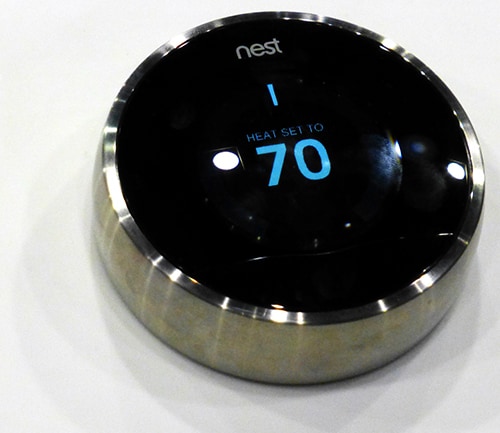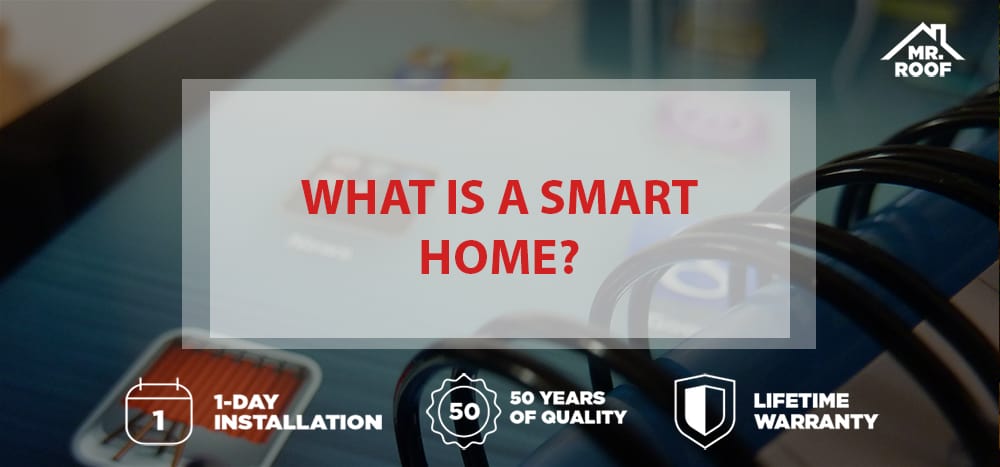Technology has made almost every facet of our lives easier. From mobile technology to Bluetooth, we control and sync everything to our mobile devices. Even our homes come loaded with “smart” technology. But what does this term really mean?
Smart Technology, Past and Present
Smart technology has evolved significantly in recent years. Twenty years ago, a porch dimmer may have been an aspect of smart home technology. Today, our houses have thermostats that can “learn” your desired temperature based on who’s home, and refrigerators that politely inform you when you’re running low on eggs or milk.
Smart homes are becoming more popular not only for their convenience, but because they improve your home’s value. Unfortunately, there’s no industry standard that defines what makes a smart home – at least, not until very recently.
Defining Smart Homes
 A recent survey by Coldwell Banker found that more than 25 percent of consumers own at least one smart appliance or product. In response to market demand, the company, which originated in an area of California that’s now called Silicon Valley, joined forces with the technology news website CNET to define what makes a smart home. In general, a smart home has:
A recent survey by Coldwell Banker found that more than 25 percent of consumers own at least one smart appliance or product. In response to market demand, the company, which originated in an area of California that’s now called Silicon Valley, joined forces with the technology news website CNET to define what makes a smart home. In general, a smart home has:
- Products connected through a Wi-Fi or Bluetooth network
- Automation or optimization features such as lighting, security, temperature control, entertainment, or safety
CNET reports that while 90 percent of Americans are familiar with and acknowledge the convenience of smart technology, only 25 percent have the technology in their homes. In other words, true smart homes are in their infancy.
Types of Smart Devices
The market for home automation and optimization products grows every day. As we begin to imagine and invent new home products that make our lives easier, we’re beginning to learn that smart home technology is virtually limitless. There are some forms of technology, however, that are more common than others. Here are some of the most common types of smart devices:
- Smart cameras. Part of your home’s security system, they can track your home’s exterior even when it’s dark outside, sending a live feed to your mobile device. You can watch your house, even when you’re on vacation thousands of miles away.
 Thermostats such as the Nest allow you to control temperature remotely. You can also program it to a certain temperature when people are home, and another when no one is around. Over time, it can even learn your patterns and adjust automatically.
Thermostats such as the Nest allow you to control temperature remotely. You can also program it to a certain temperature when people are home, and another when no one is around. Over time, it can even learn your patterns and adjust automatically.- LED lights will allow you to program brightness, even colors, right from your smart phone. They can also adjust automatically based on the amount of ambient light.
- Motion sensors can send an alert to your phone when there’s unauthorized activity around your home. They can even learn the difference between your pets and something more sinister.
- Door locks and garage doors can allow you to open doors for guests or let a mail carrier leave a package in a garage by opening it remotely with the press of a button on your phone.
- Smart appliances like washers and ovens automatically adjust to maximize energy efficiency.
These products, once cutting-edge, are now ubiquitous. You can easily purchase them at most home improvement and department stores.
Getting Started on Your Smart Home
If you’re considering equipping your home with smart technology, here are some tips:

- Decide if you need professional help. Many appliances and smart home products come with user-friendly instructions – simply connect them to your Wi-Fi and begin to enjoy the benefits. Other systems, however, may require professional installation.
- Set a budget – and stick to it. Some home builders estimate that a smart home can add well over $25,000 to your costs! Most people don’t have this kind of money to spend on technology. Start with a small project – like a smart lighting kit or a programmable thermostat – for a couple of hundred dollars. Try it out to see how useful it is for you. Then decide on your next useful piece of technology, and before you know it, you will have all the smart devices you need without blowing your budget.
Smart home technology can make your life more convenient and add to your home’s value. Follow these tips and you’ll soon be able to enjoy the benefits of smart technology within your budget. There are a lot of ways to update and modernize your home. If you don’t want to go the tech route consider new windows, siding, or insulation. Updating the exterior of your home can save you money by making your home more insulated and energy efficient. In fact, our windows were even voted 2017’s most efficient windows by EnergyStar. Mr. Roof is here for you and all your exterior updates, so don’t hesitate to call for a free estimate.









